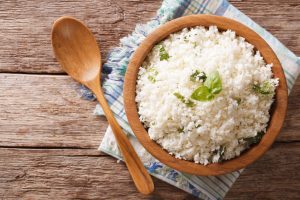
Vegetables, despite being nutrient-dense, a high source of fiber, and a healthy friend to your ticker, are often an afterthought in meal planning. Most often, veggies and salads are added on as side dishes or starters once the main meal–usually a protein or all-in-one dish such as a casserole–is set. This problematic strategy reduces the important role veggies play on your plate, which can sometimes lead to them not even making it into the meal at all.

According to 2017 survey results published by ReportLinker, “Americans overwhelmingly fall short of the government’s recommendations to eat at least five servings of vegetables and fruits daily.” This applies even to those people who have adopted healthy eating habits. In fact, in the same survey, nearly half of respondents said they consume meat-based protein every day, which one could surmise means they understand the muscle-building and metabolism-boosting properties protein offers. Yet, veggies still sit idly by as mere side dishes.
Veggies Can Be More Than Side Dishes
Trending #MeatlessMonday is an example of one option for upping your veggie intake each week. However, you don’t have to go vegetarian or vegan to make veggies the starring attraction of your sustenance. You just need to get more creative. And with the rising popularity in low-carb and Paleo diets, veggies can make it into your meals in surprising ways.
- “Rice”: While brown rice is higher in fiber and nutrients than white rice, it’s still no match for what vegetables can deliver. Still, the thought of eating a stir-fry or curry without rice can feel as though something’s missing. That’s where riced vegetables come in. Using either a box grater or a food processor with a grater blade, a head of cauliflower can be broken down into a rice substitute. And if all of that sounds like too much effort, check out the frozen vegetable aisle for pre-bagged riced options, including broccoli and butternut squash in addition to cauliflower.
-

A Spiralizer or veggie peeler allows you to use vegetables in place of pasta. “Noodles”: Like brown rice, whole wheat pasta options deliver a number of healthy benefits, but none that equate to vegetables. When it comes time to make spaghetti and meatballs or homemade chicken noodle soup, swap out the traditional noodles and go for “zoodles” instead. Using a Spiralizer or even just a veggie peeler, turn zucchini, sweet potatoes, beets, carrots, cabbage, and more into a tasty and nutritious noodle replacements. Also, check out your produce section for pre-packaged zoodle options that require no tools at all.
- “Crust”: When it comes to pizza, it’s safe to say most people associate veggies with toppings. While that’s one way to increase your daily vegetable serving, another is to make the crust of spinach. To make, blend 2 cups of spinach with a ½ cup of shredded mozzarella cheese and one egg. Spread the mixture on a parchment-paper lined baking sheet at bake for 15 minutes at 425 degrees, or until the edges are brown. Add your pizza toppings and pop it back in the oven until cheese is bubbly. Pizza crusts can also be made from other veggies, including cauliflower, broccoli, sweet potatoes, and zucchini. Or, pick up a pre-made option in your produce or freezer section.
Instead of making your meal centered around the protein, start with the veggies instead. If you’ve been meal planning with only meat in mind, this will take a little getting used to. Start with one meal each week where you select a veggie and give it all its glory on the plate. With practice, veggies will be showing up more often and helping you to reach your fat-burning goals without missing out on flavor.
What’s your favorite way to use vegetables in a meal? Share with others in the comments!

Leave a Reply